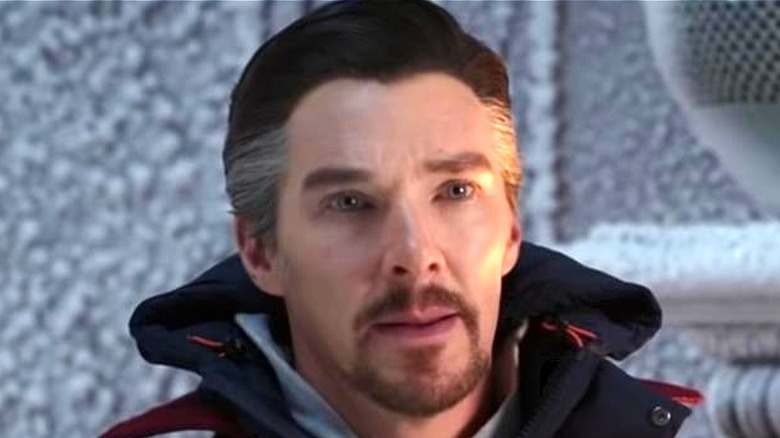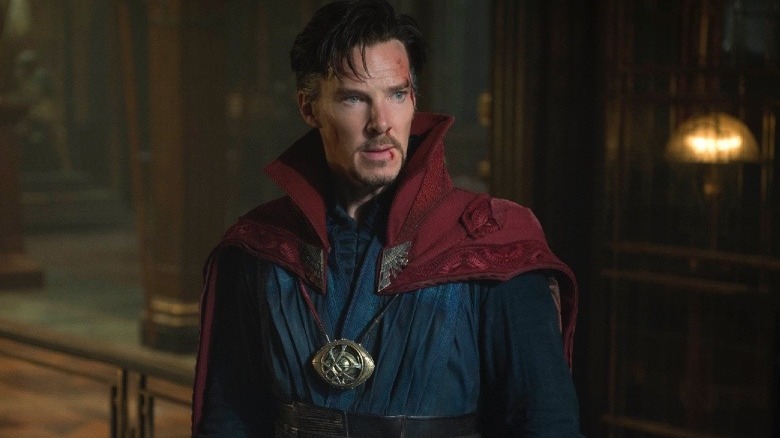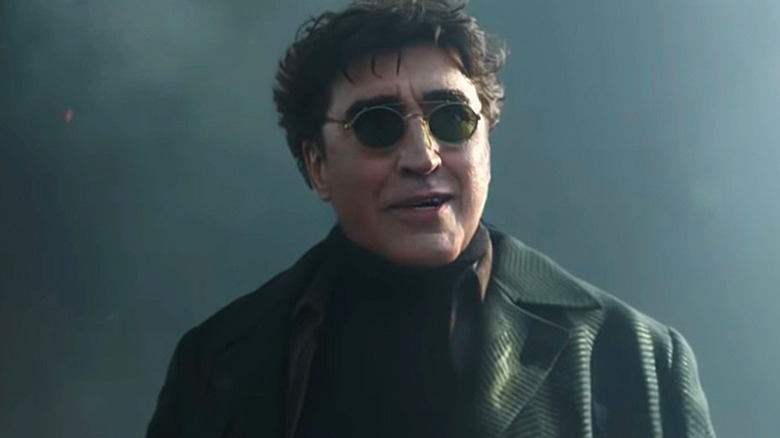How Does The Multiverse Work In Spider-Man: No Way Home?
After the likes of "Loki" and "What If...?," Marvel is now finally venturing into unmarked territory with infinite possibilities in the multiverse. Showing glimpses of and stepping into worlds that are not unlike our own, it's clear that the Marvel Cinematic Universe is on a path to being turned entirely upside down. For some heroes, it may well be hard to get their head around, but if there's anyone better suited to handle such complex matters, it's one that spends most of his time upside down anyway.
"Spider-Man: No Way Home" sees Peter Parker (Tom Holland) trying to keep his life together by inadvertently tearing apart the lines between dimensions. It's not all his fault, of course. The master of the mystic arts, Doctor Strange (Benedict Cumberbatch), has a waving hand in matters that will have significant consequences in his next solo outing, "Doctor Strange and the Multiverse of Madness." But just how does this bit of titular terrain work in Spidey's latest adventure, and what precedent does it set for other films in the future? Naturally, if you can feel your spidey sense tingling, that'll be due to the immense "No Way Home" spoilers that lie ahead. Tread carefully.
A doctor's opinion says a lot about the multiverse
Following the events of "Far From Home," Peter Parker goes to drastic lengths to try and bring some normality back to a life that the world now knows everything about. After Mysterio blew the whistle on the wall-crawler's real identity, the future of Peter and his friend's college education is jeopardized when they're refused from their selected universities following 'recent events.' This leads to Parker requesting a spell to be cast from the former Sorcerer Supreme so that everyone in the world will forget who he is. As shown in the trailer, though, things don't go according to plan, and the magic cast sends tears through the universe and others, which Dr. Strange certainly isn't prepared for.
While Spidey is going through hell on a highway with Doctor Octopus (Alfred Molina) and Norman Osborn/Green Goblin (Willem Dafoe), Doctor Strange captures Dr. Curt Connors/The Lizard (Rhys Ifans), where he quickly deduces how things went wrong. Following Peter's multiple requests, the spell, rather than erase anyone's knowledge of his heroic alias, instead pulls key figures through from other dimensions that know a Peter Parker is Spider-Man, just not this one. It's an issue that unnerves even the great doctor, who admits that "the multiverse is a concept of which we know frighteningly little." Its unpredictability is demonstrated, not just where these characters are being pulled from, but from when.
It's a matter of time and space
When Spidey finally gets the entire hit list of bad guys together in Doctor Strange's basement, a sharing session unfolds that reveals how once dead villains appear to be alive and well. As it turns out, the spell cast by Strange pulled the likes of Osborn and Octavius moments before their doom in their battles with Spider-Man, to cross paths with this one.
Doc Ock himself reveals how he had his hand around Spider-Man's throat for attempting to destroy his machine (referencing "Spider-Man 2") before finding himself up against one in an armored suit. However, with the likes of Electro, he arrived in the MCU after being thrown into the network after losing his battle with a different wall-crawler (from "The Amazing Spider-Man 2"). Keeping this in consideration, it suggests that the multiverse could pull characters through from just about any big or small-screen story that comes with a Marvel logo whenever they happened.
This new doorway could easily explain away the likes of Ryan Reynolds' Deadpool turning up to cause havoc or Tom Hardy sticking around with the web-slinger in future films. And above all, there's now the slight possibility that Old Man Logan could make a comeback with Hugh Jackman in the role. Years ago, it might've been crazy, but now? Well, there's a multiverse of possibilities.


